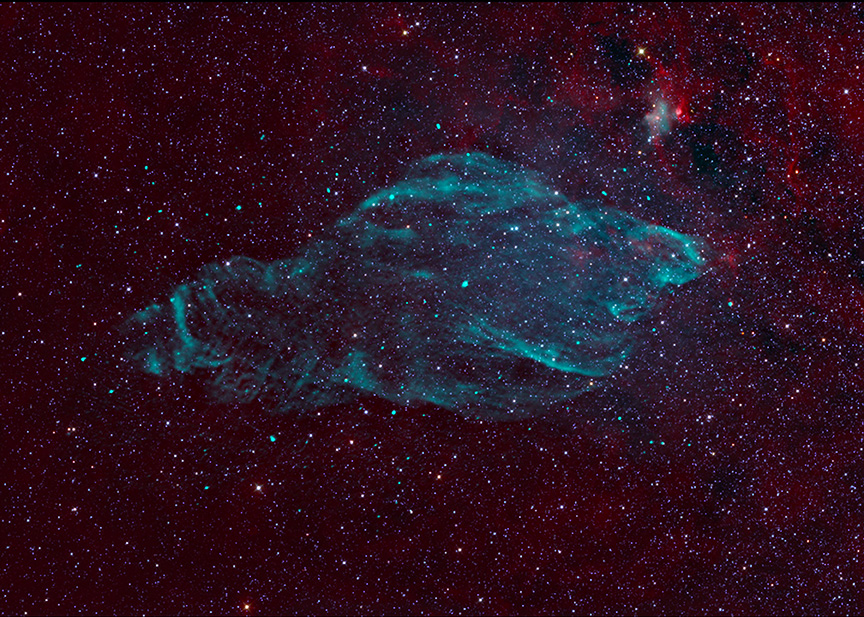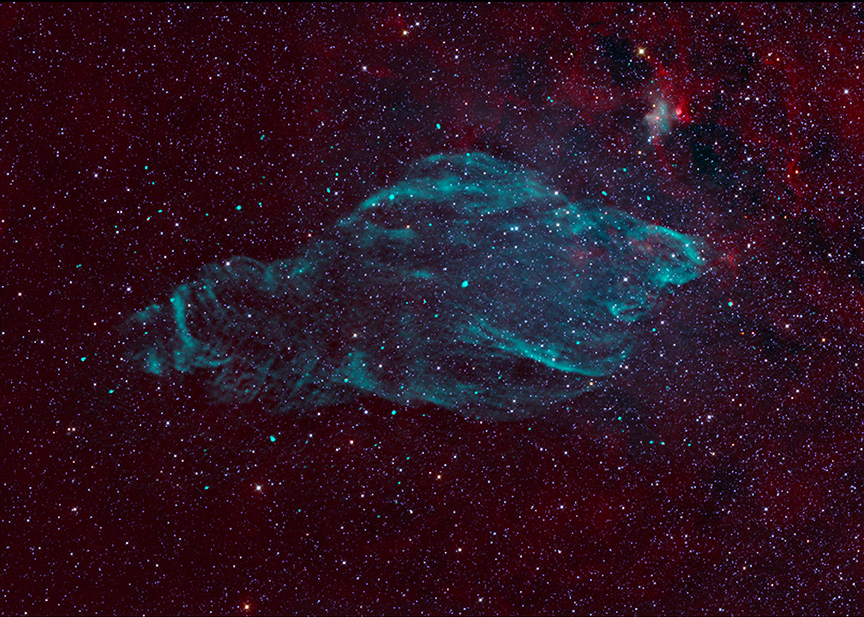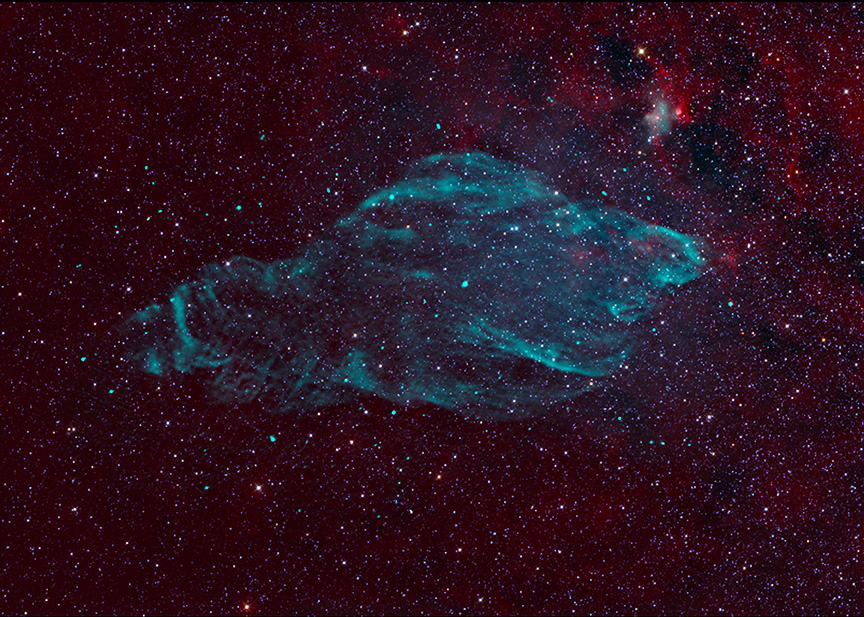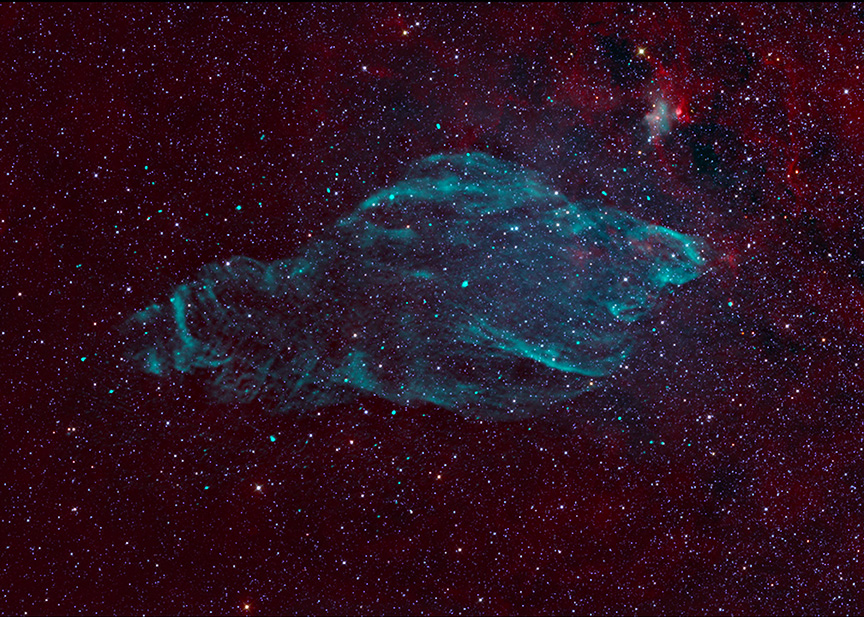
SS 433 Sonification
In this black hole composition, listeners can explore a duet. SS 433 is a binary, or double, system about 18,000 light-years away that sings out in X-rays. The two members of SS 433 include a star like our Sun in orbit around a much heavier partner, either a neutron star or a black hole. This orbital dance causes undulations in X-rays that Chandra, IXPE, and ESA’s XMM-Newton telescopes are tuned into. These X-ray notes have been combined with radio and infrared data to provide a backdrop for this celestial waltz. The nebula in radio waves resembles a drifting manatee, and the scan sweeps across from right to left. Light towards the top of the image is mapped to higher-pitch sound, with radio, infrared, and X-ray light mapped to low, medium, and high pitch ranges. Bright background stars are played as water-drop sounds, and the location of the binary system is heard as a plucked sound, pulsing to match the fluctuations due to the orbital dance.
Composite
download
X-ray
download
Radio
download
Radio & IR
download
Radio & IR
Stars Only
download
Radio & IR
No Stars
download
Access more information & file formats on this sonification
The Chandra sonifications were led by the Chandra X-ray Center (CXC), with input from NASA's Universe of Learning. The sustained collaboration was driven by visualization scientist Dr. Kimberly Arcand (CXC), astrophysicist Dr. Matt Russo and musician Andrew Santaguida (both of the SYSTEM Sounds project). For other sonifications, please see their linked pages.
cxcpub@cfa.harvard.edu
617-496-7941
60 Garden Street,
Cambridge, MA 02138 USA
Art Direction/Design: Kristin DiVona
Web Developers: Khajag Mgrdichian
& Kelly T.S. Williamson
Chandra X-ray Center, Operated for NASA by the Smithsonian Astrophysical Observatory. This site was developed with funding from NASA under contract NAS8-03060 | Privacy | Accessibility
Additional support from NASA's Universe of Learning (UoL). UoL materials are based upon work supported by NASA under award number NNX16AC65A to the Space
Telescope Science Institute, working in partnership with Caltech/IPAC, Jet Propulsion Laboratory, and Smithsonian Astrophysical Observatory.






